Everything you need to know about making a meringue. Plus, 6 tips to achieve the most stable French meringue and visual cues for 3 stages of meringue.
I’m obsessed with meringue based desserts!!!
Pavlova cake, angel food cake, meringue cookies, lemon meringue pie, divinity, and, of course, macarons, just to name a few.
And it’s only appropriate to dedicate an entire post to discuss all the nitty gritty details on making a perfect meringue.
Over the years, I’ve gathered lots of tips and tricks to make the most stable French meringue. And I’m sharing it all with you today.
In this post, we’ll discuss:
- What is meringue? (The science stuff…)
- 3 types of meringue
- 4 stages of meringue
- And the recipe for French meringue
- Plus, 6 tips for making the most stable French meringue
If you prefer, you can watch this video too.
WHAT IS MERINGUE?
Meringue is basically whipped egg whites, often stabilized by sugar and acid.
Let me quickly explain the science behind how meringue is made, which will help you understand the “why”-s behind the strict rules around it.
Egg whites are made up of 90% of water and 10% of protein.
These proteins are made up of long chains of amino acids. Some amino acids are attracted to water – water-loving amino acids, while other amino acids are repelled by water, water-fearing amino acids.
And when we whisk an egg white, we incorporate air bubbles into this water-protein mixture, creating a foam and unraveling those proteins.
When proteins unfold, 2 things happen:
- Water-fearing amino acids are exposed and they move to the air bubbles to stay away from water in the egg white.
- As water-fearing amino acids coat the air bubbles, water-loving amino acids begin to stick together, creating a network that holds the air bubbles in place.
Why no fat?
Fat interferes with formation of a good foam, because fat is also attracted to air bubbles and they push the proteins away from the bubbles. However, instead of protecting the air bubbles from popping, like protein does, fat molecules actually pop them.
Yolk has fat molecules, and that’s why it’s SO important to be careful not to include any drop of yolk into the egg whites!
RULE #1: Keep the bowls and whisks clean and grease-free. Use stainless steel or glass bowl for whipping meringue, and be careful not to include even smallest drop of egg yolk into the whites.
TIP 1: It’s easier to separate cold eggs straight from the fridge, because yolk is nice and firm.
TIP 2: Room temperature egg whites whip better and get more volume. So separate the egg whites and yolks right out of the fridge, then keep the whites on the counter for about 30 minutes to come to room temperature.
Now, these protein-wrapped bubbles, aka whipped egg whites, are weak and will break down pretty quickly. That’s why it’s important to stabilize it with sugar and acid.
2 stabilizers for meringue:
- Acid in a form of cream of tartar, or lemon juice, or vinegar.
- Sugar.
What role acid plays in meringue?
Adding acid slows down the process of forming a foam, but it prevents too many proteins from linking together, creating stronger and more stable network around the air bubbles.
What role sugar plays in meringue?
Sugar also slows down unfolding the proteins and delaying formation of foam and protecting the egg whites from over-beating.
Also, sugar dissolves, creating thick syrupy coating around the air bubbles, which helps the foam hold stronger.
How much sugar to use for meringue?
The sugar amount depends on the specific recipe and what you’re making with the meringue. Each egg white can hold up to 50gr (¼ cup) of sugar!
TIP: The higher the sugar amount in French meringue, the stronger the meringue will be.
Also, it’s harder to over-beat a meringue if you have higher sugar to egg white ratio.
You need to be careful with meringue where there’s low sugar proportion to egg whites, because you could over-whip the meringue, creating grainy liquid mess.
3 TYPES OF MERINGUE:
Now that we understand how it all works, let’s talk about 3 types of meringue.
- Swiss meringue is when you combine egg whites and sugar in a bowl over a double boiler. And then cook it gently until 160°F and then whip it into a meringue. I use this method for mostly Swiss meringue buttercream.
- Italian meringue is when you make a sugar syrup and pour it into whipping egg whites. This is the most stable meringue of all, and it’s ideal for pie topping.
- And finally, French meringue. It’s when you make a meringue by adding sugar into the whipping egg whites.
While French meringue is the least stable of the three methods, it’s my go-to for making macarons.
4 STAGES OF MERINGUE:
Different recipes call for different meringue consistency, aka meringue stage. There’re 4 stages of meringue, but the 4th one is the failed one and I hope you never get there.
Foamy meringue – This’s the first stage of meringue, when you beat the egg whites for just couple of minutes. It’ll be light and bubbly. Once you get to this stage, you can start adding sugar.
Soft peak meringue – After beating the egg whites with sugar for a little while, meringue turns pure white, shiny and thick. And when you lift the whisk, the meringue doesn’t form a strong pointy peak yet. Instead it kind of curls down. It takes about 5 minutes in my stand mixer on speed 4 to reach soft peaks. Soft peak meringue is often used for sponge cakes, Pavlova, angel food cake, topping meringue pies, etc.
Stiff peak meringue – If you continue to beat the meringue from soft-peak stage, it’ll get even thicker. And as you lift the whisk, the meringue forms a stiff, pointy end. At this stage meringue is super thick, and doesn’t even pour out of the bowl if you turn it upside down. It takes 10-12 minutes to reach stiff peaks in my stand mixer on speed 4. Stiff-peak meringue is used for making meringue cookies, macarons, souffle cheesecake.
Broken meringue – Now, if you whip the egg whites a bit too long, you may get a broken meringue. It looks grainy and separated. There’s a higher chance to get over-whipped broken meringue, if you have lower sugar ratio to egg whites.
How to fix a broken meringue:
If you have a slightly over-beaten meringue, you can salvage it by gently folding in a little bit egg white.
So to sum it all up…
6 TIPS FOR THE MOST STABLE FRENCH MERINGUE:
- Make sure to clean everything that gets in touch with egg whites. Mixing bowl, whisk and everything have to be complete grease-free. And that includes egg yolks. Be very careful not to break the egg yolks. Even the smallest yolk may ruin your meringue! Don’t take the chances here.
- Whip room temperature egg whites for the best volume!
- Beat the meringue on low and steady speed. I usually go for speed 2 or 4 on my KitchenAid mixer. I know it’s tempting to just blast the speed and get the volume up quickly, but the meringue won’t be as stable!
- Make sure to add the sugar slowly, allowing it to dissolve before adding more. If you dump too much sugar in, it’ll deflate all the air bubbles, compromising the structure. Also, if you leave sugar granules undissolved, your meringue will weep later on. To test, rub a little bit of meringue and feel if there is any sugar granules in the meringue. Oh another interesting tip is that you’ll have less chances to over-beat the meringue if you add the sugar slowly!
- Speaking of sugar, get a super fine granulated sugar, aka castor sugar or baker’s sugar, because it dissolves quicker.
- And lastly, make the meringue right before you need it. Meringue will start breaking down if you don’t use it right away.
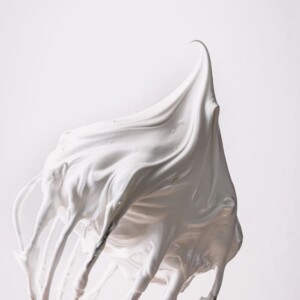
How to Make French Meringue
Ingredients
- 2 egg whites 65-70gr, at room temperature
- ¼ teaspoon cream of tartar optional
- ¼ teaspoon coarse kosher salt
- 75 gr 1/3 cup + 2 tablespoons fine granulated sugar
Instructions
- In a clean mixing bowl with a whisk attachment, beat the egg whites on medium low speed until foamy. (I set it to speed 2 or 4 on my KitchenAid stand mixer.)
- When egg whites are foamy, add cream of tartar and salt and continue to whisk.
- Then slowly add sugar one tablespoon at a time, while mixer is still running. Allow the sugar to dissolve after each addition.
- Continue beating the egg whites on the same medium low speed until desired stage is reached. About 5 minutes for soft peak stage, and 10-12 minutes for stiff peaks.
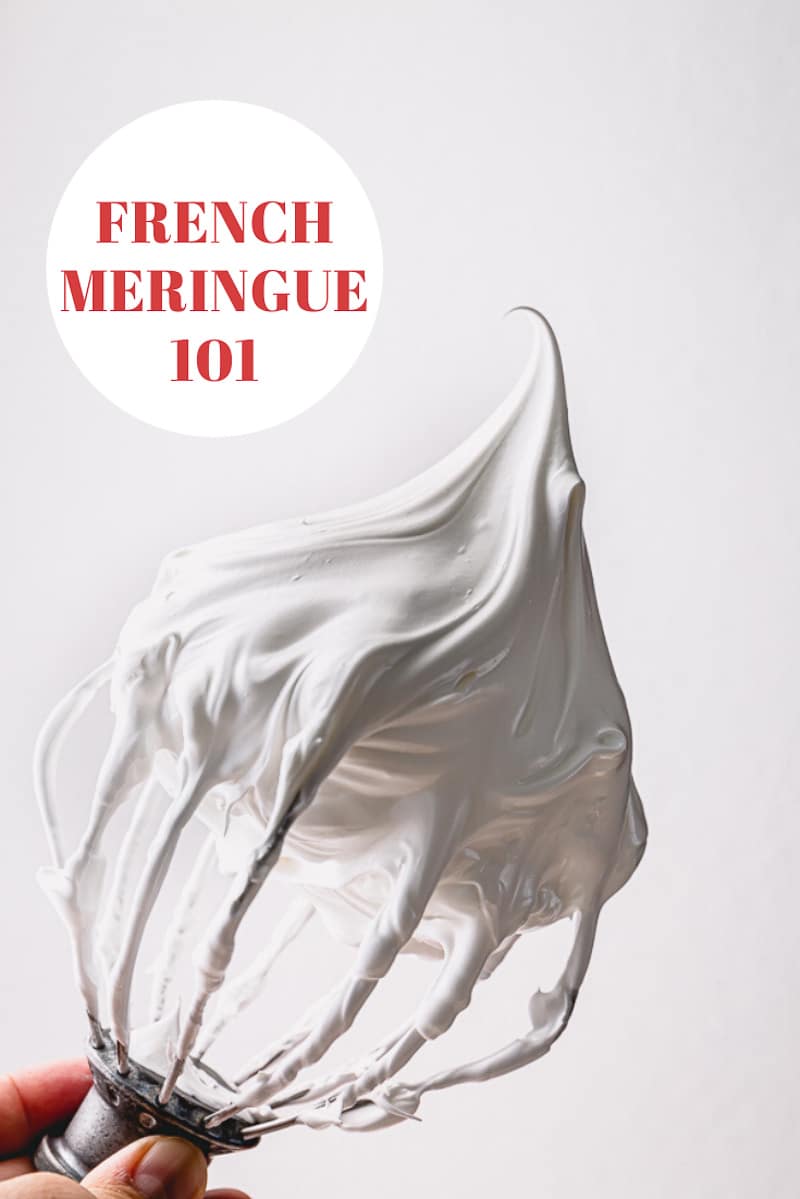
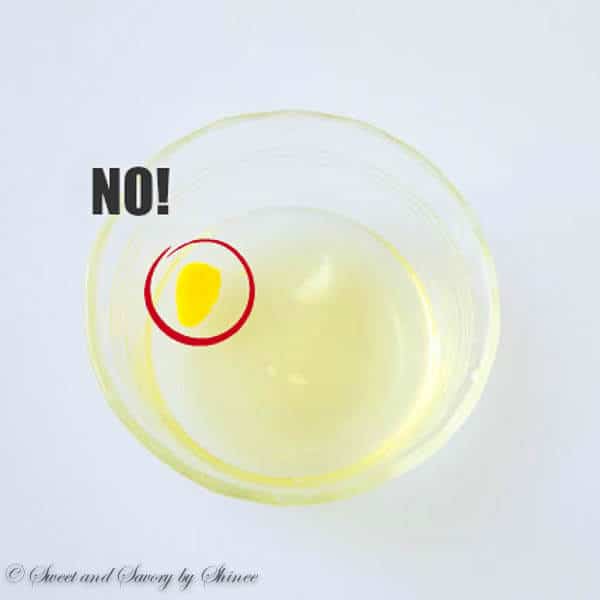
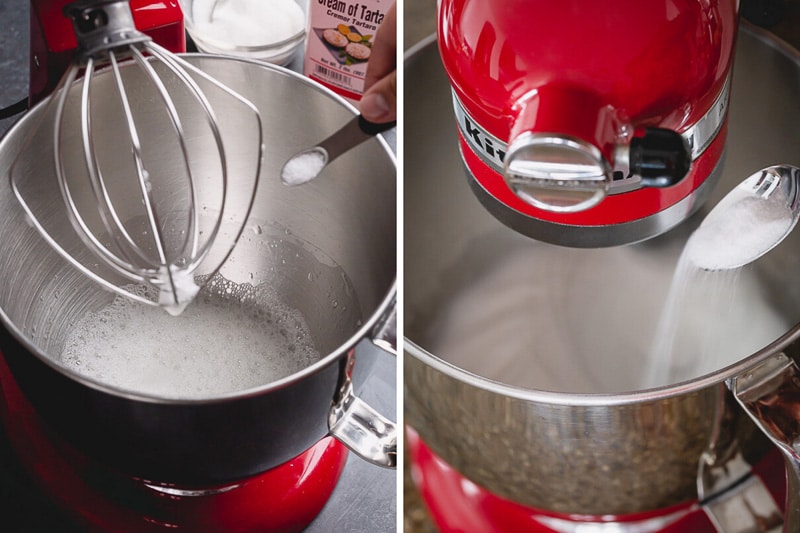
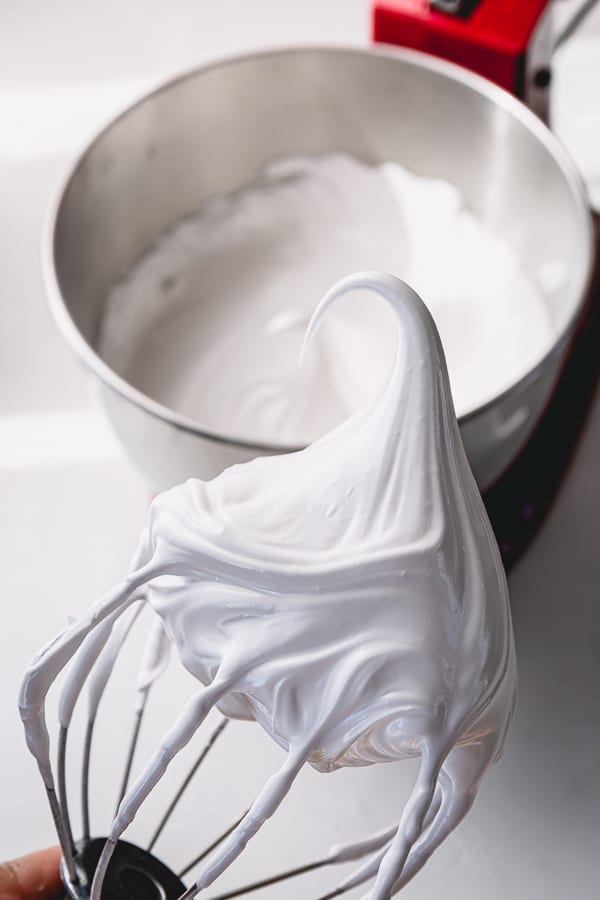
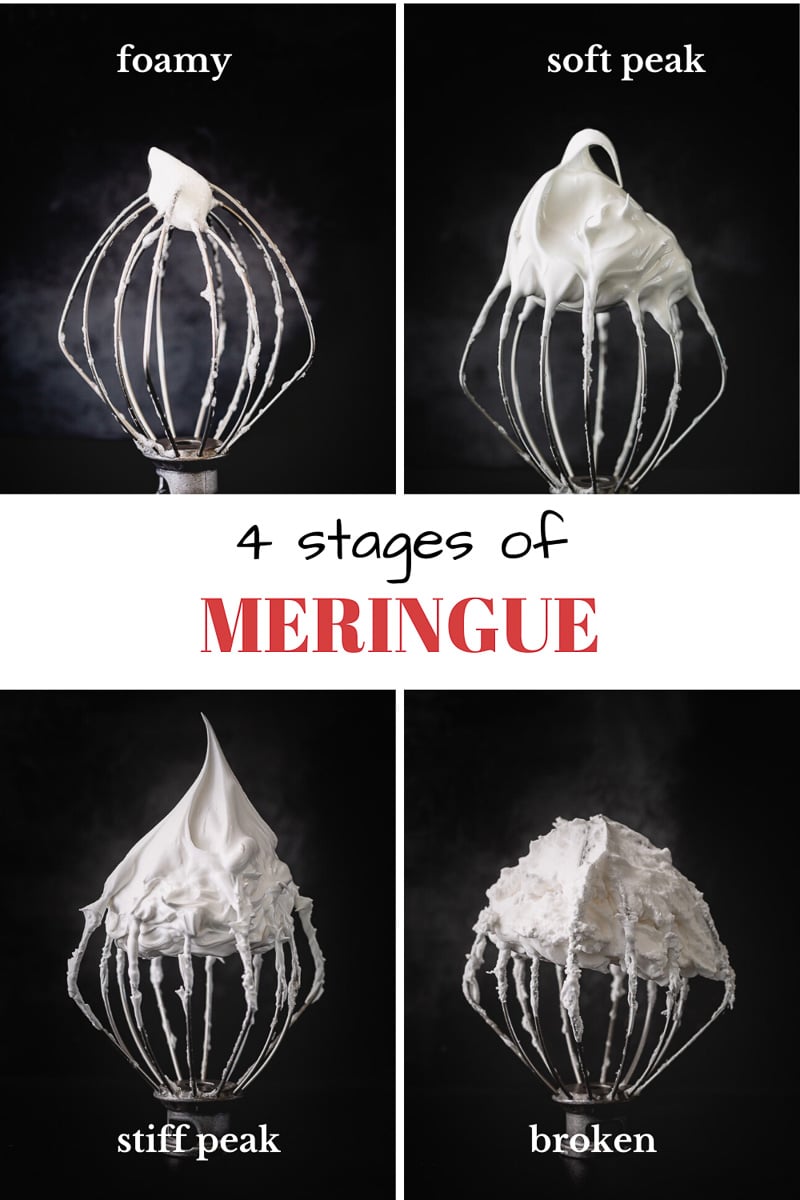


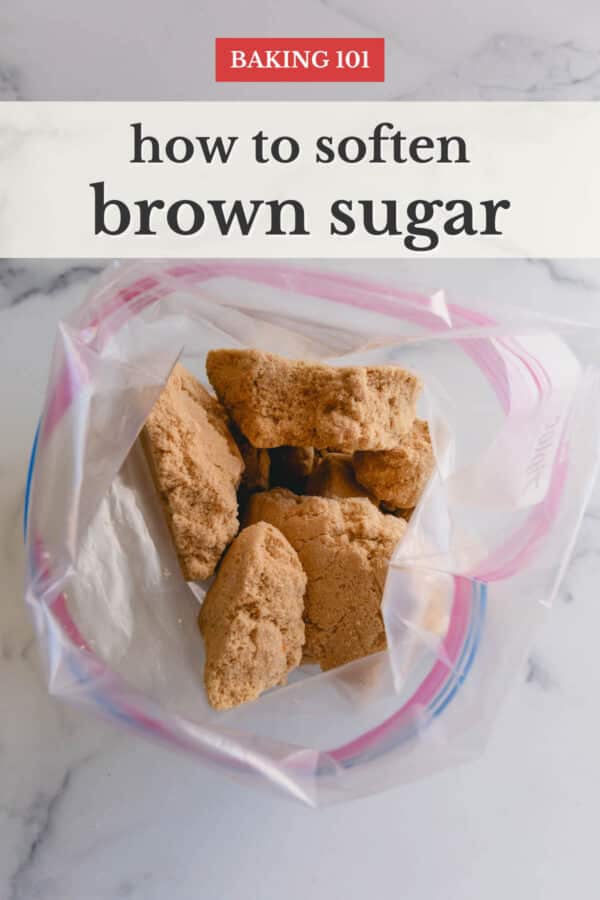

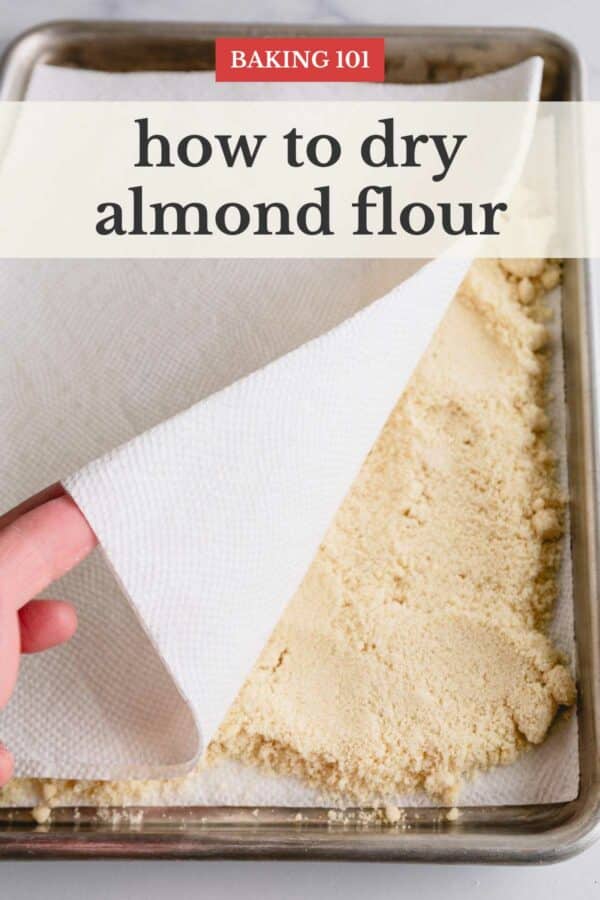
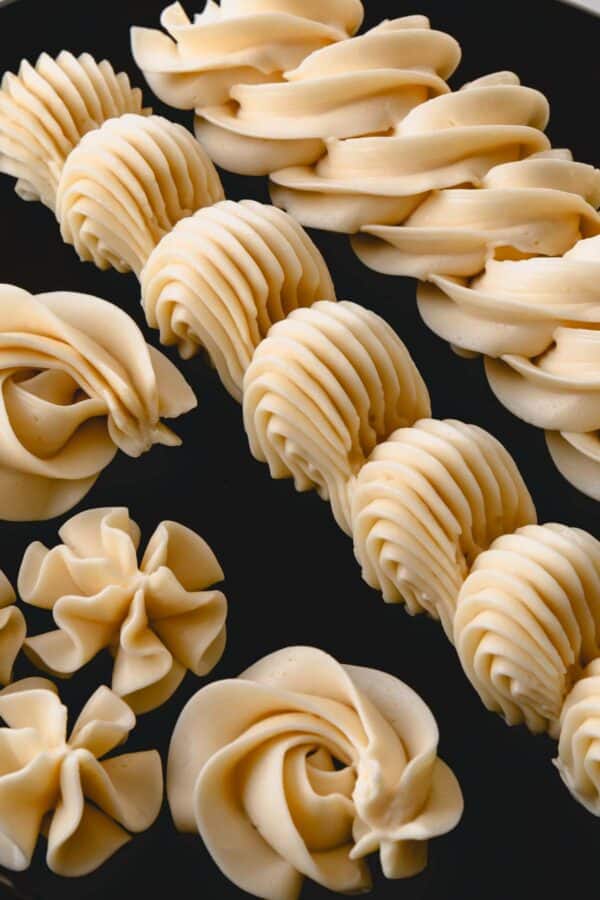

Thank you very much for all the explanations and tips.
How long does it take to bake? And at what temperature do you bake the meringue?
Thanks
Hi, Esther. The baking time depends on the size of the meringue cookies. Here’s my meringue cookie recipe with the baking instructions.
Hi I have been making macarons for years I was actually super proud of my recipe which is less sugar than others. On my way to growth and asking others to help me now for the first time I am experiencing hollow shells. They don’t appear abnormally hollow at first but the hollow is not going away after its matured. In fact the shell cracks and falls away leaving the center. I can not figure out what we are doing different as I have trained everyone on stiff peaks, macaronage and monitor our oven and ingredients. It leads me to believe that maybe the ratio of my recipe is off. Because I used to have less sugar in my egg and when I increased it I feel I started to experience this problem. What would be the least amount of. sugar you would add to egg. white if you want to accomplish a low sugar but stable meringue?
Hi, Mischka. Thank you for reaching out. So, the less sugar you add to the meringue, the less stable it becomes. I don’t recommend cutting down sugar in the meringue. If you want to reduce the sugar, I’d recommend trying reducing the powdered sugar. But it’ll take you some experimentation to perfect your recipe. I love my basic macaron recipe and I believe it has way less sugar than most recipes.
Thank you for sharing your recipe Shinee
My pleasure.
Thanks for the tips. I have not been able to successfully make meringue cookies yet. I aunderstand a bit more after reading your recipe and explanation of the process. I will try again.
Yay, so happy you found it helpful. Good luck on your next meringue cookies! Also, I have a new video coming this Friday (Oct 1st) on how to make meringue cookies.
I do exactly what you say but my meringue does not want to get to peak stage..it is runny
Hi, Alice. If the meringue doesn’t reach stiff peaks no matter how long you’ve whipped, I suspect your utensils were greasy, or you had an egg yolk in your whites.
Could you give me the amount of sugar for 3 egg whites please. At what oven temperature and for how long would i bake the meringue if using to top a lemon meringue pie/tart? Thanks so much.
Hi, Pam. I’d use 5-6 tablespoons of sugar for pie topping. I bake my lemon meringue pie for 8-10 minute at 375°F. If you’re interested, here’s my lemon meringue pie recipe. I also add 1 tablespoon of cornstarch to prevent beading.
Hello, I’m a fairly new baker and love the detail of this post! My question is, is it safe to not heat the egg whites? And can I add vanilla or another flavor to this recipe? These are probably basic questions but I want to make sure I’m doing things correctly and safely. Thanks again for the great post! 😊
Hi, Wendey. Thank you for your comment. So this’s just a technique for making a french meringue, that’s used for different recipes, such as macarons, Angel food cake, meringue cookies, etc. For French meringue where egg whites are not heated, you definitely need to cook it. I appreciate your comment, I’ll add this information.
Can you store left over French merengue? If so what’s the best way??
Hi, Yessica. Do you mean if you could store un-used French meringue that hasn’t been cooked? If so, no, meringue doesn’t last long at all, and it’s best to use it right away.
Thank you for making this video it was very helpful.
Yay, I’m glad you found the video helpful. Thank you for your feedback, Sally!